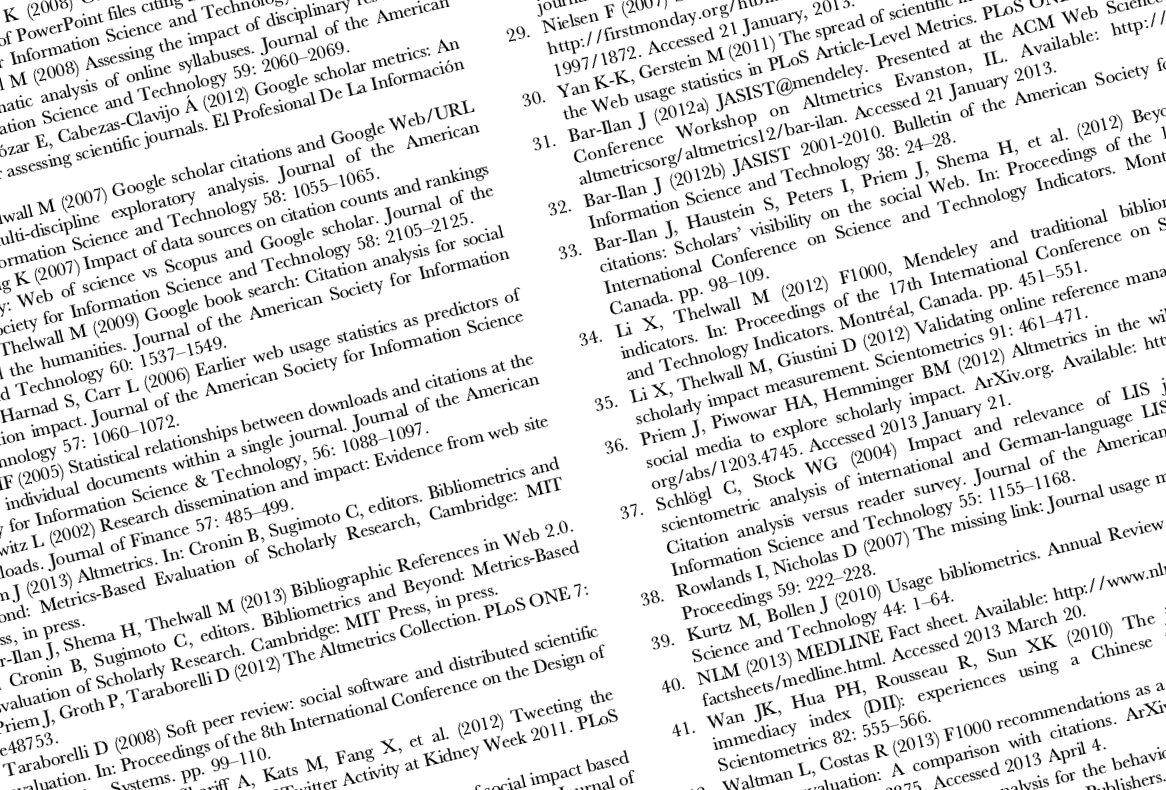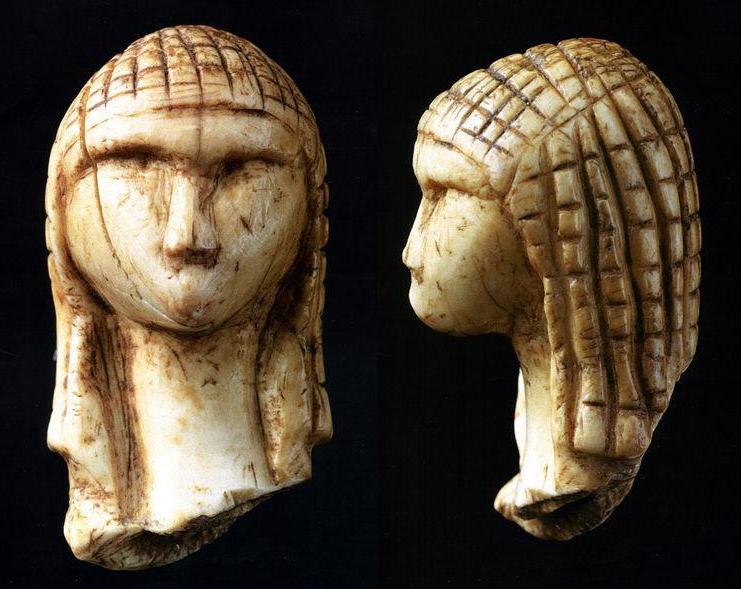|
Citations
A citation is a reference to a source. More precisely, a citation is an abbreviated alphanumeric expression embedded in the body of an intellectual work that denotes an entry in the bibliographic references section of the work for the purpose of acknowledging the relevance of the works of others to the topic of discussion at the spot where the citation appears. Generally, the combination of both the in-body citation and the bibliographic entry constitutes what is commonly thought of as a citation (whereas bibliographic entries by themselves are not). Citations have several important purposes. While their uses for upholding intellectual honesty and bolstering claims are typically foregrounded in teaching materials and style guides (e.g.,), correct attribution of insights to previous sources is just one of these purposes. Linguistic analysis of citation-practices has indicated that they also serve critical roles in orchestrating the state of knowledge on a particular topic, ident ... [...More Info...] [...Related Items...] OR: [Wikipedia] [Google] [Baidu] |
Scientific Citation
Scientific citation is the process of systematically acknowledging sources from which information, data, ideas, or direct quotations are drawn in Academic writing, scholarly work.Sources in science are typically previously-published Peer review, peer-reviewed Academic journal, journal articles, books, Thesis, theses or dissertations, Conference proceedings, conference papers, and rarely private or public communications. Citations connect a researcher’s work with existing Literature review, literature, ensuring transparency, academic integrity, and safe outcomes such as in medical science. Effective citation practices require clear, standardized mechanisms for referencing materials, particularly crucial as electronic publishing and online data repositories expand rapidly. Scientists generate Epistemology, new knowledge by practicing the scientific method on the thoughts, ideas, and work that scientists did before them. By applying scholarly principles, scientists may report thei ... [...More Info...] [...Related Items...] OR: [Wikipedia] [Google] [Baidu] |
Parenthetical Referencing
Parenthetical referencing is a citation system in which in-text citations are made using parentheses. They are usually accompanied by a full, alphabetized list of citations in an end section, usually titled "references", "reference list", "works cited", or "end-text citations". Parenthetical referencing can be used in lieu of footnote citations (the Vancouver system). Parenthetical referencing normally uses one of these two citation styles: * Author–date (also known as Harvard referencing): primarily used in the natural sciences and social sciences, and recommended by the American Chemical Society and the American Psychological Association (APA) (see APA style); * Author–title or author–page: primarily used in the arts and the humanities, and recommended by the Modern Language Association (MLA) (see MLA Handbook). Author–date (Harvard referencing) In the author–date method (Harvard referencing), the in-text citation is placed in parentheses after the sentence or ... [...More Info...] [...Related Items...] OR: [Wikipedia] [Google] [Baidu] |
Note (typography)
In publishing, a note is a brief text in which the author comments on the subject and themes of the book and names supporting citations. In the editorial production of books and documents, typographically, a note is usually several lines of text at the bottom of the page, at the end of a chapter, at the end of a volume, or a house-style typographic usage throughout the text. Notes are usually identified with superscript numbers or a symbol.''The Oxford Companion to the English Language'' (1992) p. 709. Footnotes are informational notes located at the foot of the thematically relevant page, whilst endnotes are informational notes published at the end of a chapter, the end of a volume, or the conclusion of a multi-volume book. Unlike footnotes, which require manipulating the page design (text-block and page layouts) to accommodate the additional text, endnotes are advantageous to editorial production because the textual inclusion does not alter the design of the publication. How ... [...More Info...] [...Related Items...] OR: [Wikipedia] [Google] [Baidu] |
Citing Wikipedia
We advise special caution when using Wikipedia as a source for research projects. Normal academic usage of Wikipedia is for getting the general facts of a problem and to gather keywords, references and bibliographical pointers, but not as a source in itself. Remember that Wikipedia is a wiki. Anyone in the world can edit an article, deleting accurate information or adding false information, which the reader may not recognize. Thus, you '' probably shouldn't be citing Wikipedia''. This is good advice for all tertiary sources such as encyclopedias, which are designed to introduce readers to a topic, not to be the final point of reference. Wikipedia, like other encyclopedias, provides overviews of a topic and indicates sources of more extensive information. See researching with Wikipedia and academic use of Wikipedia for more information. If you do decide to cite Wikipedia, remember that its articles are constantly changing: cite exact time, date, and the article version you ... [...More Info...] [...Related Items...] OR: [Wikipedia] [Google] [Baidu] |
Legal Citation
Legal citation is the practice of crediting and referring to authoritative documents and sources. The most common sources of authority cited are court decisions (cases), statutes, regulations, government documents, treaties, and scholarly writing. Typically, a proper legal citation will inform the reader about a source's authority, how strongly the source supports the writer's proposition, its age, and other, wikt:relevant, relevant information. Citation by country Some countries have a de facto citation standard that has been adopted by most of the country's institutions. Australia Australian legal citation usually follows the ''Australian Guide to Legal Citation'' (commonly known as AGLC) Canada Canadian legal citation usually follows the ''Canadian Guide to Uniform Legal Citation'' (commonly called the McGill Guide) Germany German legal citation Ireland OSCOLA Ireland is the system of legal citation for Ireland. OSCOLA Ireland was adapted from the Oxford Standard for C ... [...More Info...] [...Related Items...] OR: [Wikipedia] [Google] [Baidu] |
Academic Discipline
An academic discipline or academic field is a subdivision of knowledge that is taught and researched at the college or university level. Disciplines are defined (in part) and recognized by the academic journals in which research is published, and the learned society, learned societies and academic departments or faculties within colleges and universities to which their practitioners belong. Academic disciplines are conventionally divided into the humanities (including philosophy, Linguistics, language, art and cultural studies), the scientific disciplines (such as physics, chemistry, and biology); and the formal sciences like mathematics and computer science. The social sciences are sometimes considered a fourth category. It is also known as a ''field of study'', ''field of inquiry'', ''research field'' and ''branch of knowledge''. The different terms are used in different countries and fields. Individuals associated with academic disciplines are commonly referred to as ''expert ... [...More Info...] [...Related Items...] OR: [Wikipedia] [Google] [Baidu] |
PMID
PubMed is an openly accessible, free database which includes primarily the MEDLINE database of references and abstracts on life sciences and biomedical topics. The United States National Library of Medicine (NLM) at the National Institutes of Health maintains the database as part of the Entrez system of information retrieval. From 1971 to 1997, online access to the MEDLINE database was provided via computer and phone lines primarily through institutional facilities, such as university libraries. PubMed, first released in January 1996, ushered in the era of private, free, home- and office-based MEDLINE searching. The PubMed system was offered free to the public starting in June 1997. Content In addition to MEDLINE, PubMed provides access to: * older references from the print version of ''Index Medicus'', back to 1951 and earlier * references to some journals before they were indexed in Index Medicus and MEDLINE, for instance ''Science'', '' BMJ'', and ''Annals of Surgery'' ... [...More Info...] [...Related Items...] OR: [Wikipedia] [Google] [Baidu] |
Serial Item And Contribution Identifier
The Serial Item and Contribution Identifier (SICI) was a code (ANSI/ NISO standard Z39.56-1996 2002 used to uniquely identify specific volumes, articles or other identifiable parts of a serial. It was "intended primarily for use by those members of the bibliographic community involved in the use or management of serial titles and their contributions". Developed over 1993–1995, NISO adopted SICI as a standard in 1996, then reaffirmed it in 2002. It was withdrawn in 2012. Description It is an extension of the International Standard Serial Number, which identifies an entire serial (similar to the way an ISBN identifies a specific book). The ISSN applies to the entire publication, however, including every volume ever printed, so this more specific identifier was developed by the Serials Industry Systems Advisory Committee (SISAC) to allow references to specific parts of a journal. The variable-length, free of charge, code is compatible with other identifiers, such as DOI, ... [...More Info...] [...Related Items...] OR: [Wikipedia] [Google] [Baidu] |
The Arts
The arts or creative arts are a vast range of human practices involving creative expression, storytelling, and cultural participation. The arts encompass diverse and plural modes of thought, deeds, and existence in an extensive range of media. Both a dynamic and characteristically constant feature of human life, the arts have developed into increasingly stylized and intricate forms. This is achieved through sustained and deliberate study, training, or theorizing within a particular tradition, generations, and even between civilizations. The arts are a medium through which humans cultivate distinct social, cultural, and individual identities while transmitting values, impressions, judgments, ideas, visions, spiritual meanings, patterns of life, and experiences across time and space. The arts are divided into three main branches. Examples of visual arts include architecture, ceramic art, drawing, filmmaking, painting, photography, and sculpture. Examples of literature i ... [...More Info...] [...Related Items...] OR: [Wikipedia] [Google] [Baidu] |
Style Guide
A style guide is a set of standards for the writing, formatting, and design of documents. A book-length style guide is often called a style manual or a manual of style. A short style guide, typically ranging from several to several dozen pages, is often called a style sheet. The standards documented in a style guide are applicable for either general use, or prescribed use in an individual publication, particular organization, or specific field. A style guide establishes standard style requirements to improve communication by ensuring consistency within and across documents. They may require certain best practices in writing style, usage, language composition, visual composition, orthography, and typography by setting standards of usage in areas such as punctuation, capitalization, citing sources, formatting of numbers and dates, table appearance and other areas. For academic and technical documents, a guide may also enforce best practices in ethics (such as authorship, ... [...More Info...] [...Related Items...] OR: [Wikipedia] [Google] [Baidu] |
Benedictine University
Benedictine University is a Private university, private Catholic Colleges in the United States, Catholic university with campuses in Lisle, Illinois, and Mesa, Arizona, United States. It was founded in 1887 by the Benedictine monks of St. Procopius Abbey in the Pilsen, Chicago, Pilsen community on the West Side, Chicago, West Side of Chicago. The institution has retained a close relationship with the Benedictine Order, which bears the name of St. Benedict (480–543 A.D.), the acknowledged father of western monasticism. The Lisle campus resides in the western Chicago metropolitan area, located near two national research facilities, Argonne National Laboratory and Fermi National Accelerator Laboratory. History Benedictine University, also called BenU, was founded in 1887 as St. Procopius College by the Benedictine monks of St. Procopius Abbey, who lived in the Pilsen community of Chicago's West Side. The monks created the all-male institution just two years after their communit ... [...More Info...] [...Related Items...] OR: [Wikipedia] [Google] [Baidu] |


